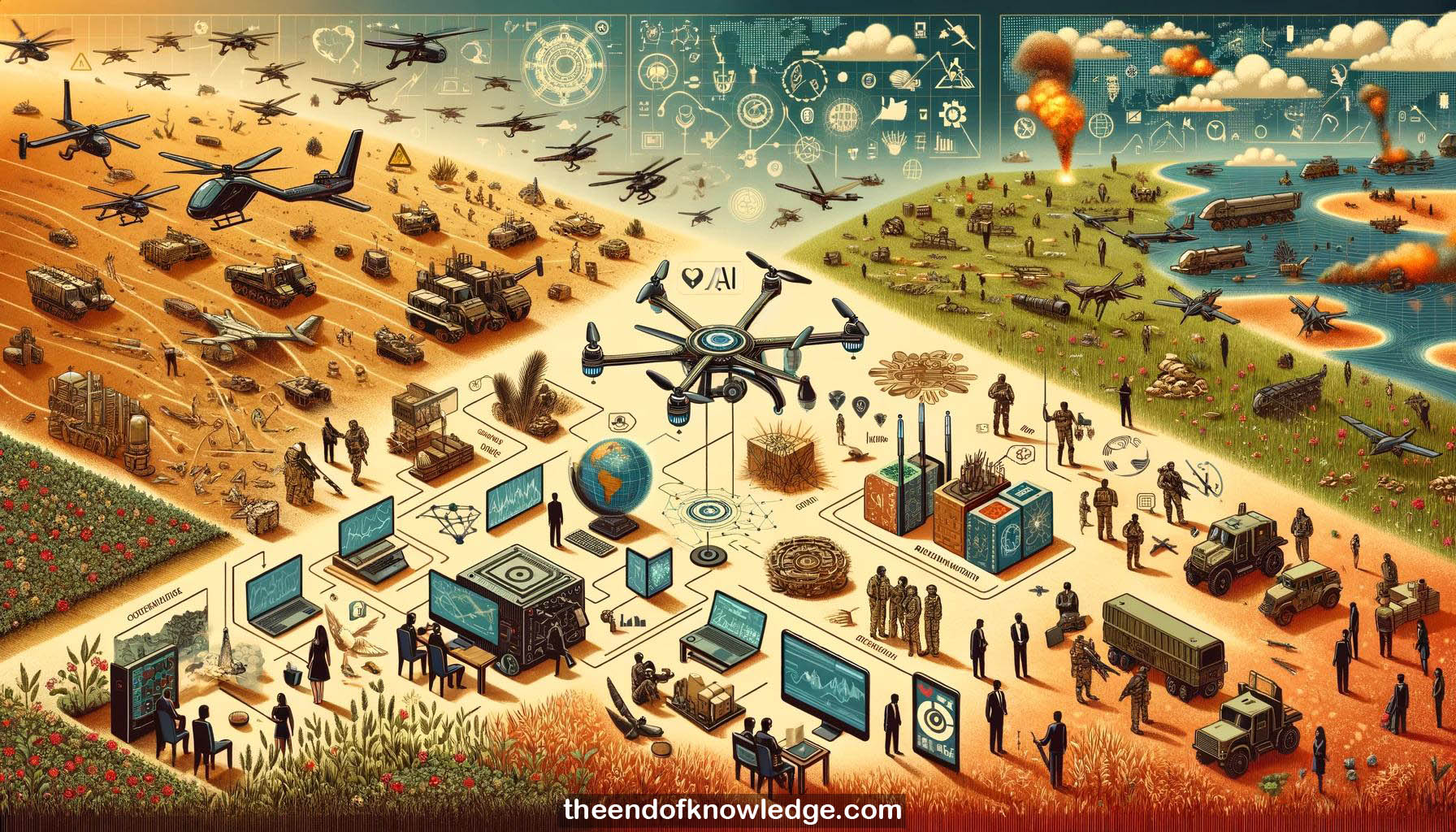 >
>
Concept Graph & Resume using Claude 3 Opus | Chat GPT4o | Llama 3:
Resume:
1.- AI for Good Initiative: The AI for Good initiative, led by the International Telecommunication Union (ITU), aims to leverage AI to accelerate the United Nations' Sustainable Development Goals through global and inclusive dialogues.
2.- AI for Weapon Decontamination: AI and drones equipped with thermal sensing technology are being used to detect abandoned weapons in conflict zones, aiming to clear landmines and make areas safe for habitation.
3.- Collaborative Effort: The project is a collaborative effort involving ITU, the X Prize Foundation, and 38 UN agencies, highlighting the importance of interdisciplinary and international cooperation in humanitarian work.
4.- Consultant Expertise: Martin Jebens, a consultant with expertise in disaster risk management and geology, leads the R&D project on using airborne remote sensing and AI for weapon detection.
5.- Project Genesis: The project began in 2018 with an agreement between ICRC and Tsuda University in Tokyo to explore new technologies for humanitarian action, focusing initially on drones and thermal sensing.
6.- Affordable Technology: The use of off-the-shelf drones and thermal cameras, such as the Phantom 4 Professional and FLIR Pro View, ensures the equipment is cost-effective and sustainable for field use.
7.- Thermal Sensing Capabilities: Thermal cameras detect heat differences, enabling the identification of subsurface objects like landmines by observing the heat footprint they create in the surrounding soil.
8.- Challenges and Adaptations: The COVID-19 pandemic required adapting the project to local conditions, such as creating test fields in Denmark to simulate various soil and vegetation types for testing the technology.
9.- Field Testing: The project aims to deploy technology in real conflict zones, collaborating with ICRC delegations in different countries to test and validate the equipment's effectiveness in diverse environments.
10.- Legislation and Permissions: Drone operations are subject to varying national regulations, requiring negotiations with local authorities to ensure compliance and facilitate field tests.
11.- Environmental Factors: Successful detection using thermal sensing is influenced by environmental factors such as vegetation, wind, sunlight, and soil conditions, impacting the accuracy of the technology.
12.- AI and Deep Learning: The integration of AI and deep learning enhances the probability of detecting weapons while reducing false alarms, crucial for efficient and cost-effective demining operations.
13.- Non-Technical Survey Tool: While not a complete solution, the technology serves as a valuable tool for non-technical surveys, helping to define suspected hazardous areas and prioritize clearance efforts.
14.- Remote Collaboration: During travel restrictions, remote collaboration with local teams and authorities becomes essential, enabling continued progress and data collection despite limitations.
15.- Broader Applications: Beyond weapon detection, thermal and remote sensing technology has potential applications in other humanitarian areas, such as identifying mass burial sites and monitoring environmental changes.
16.- Data Management: Effective data management and analysis are critical, with AI playing a significant role in processing large datasets to support decision-making rather than just data collection.
17.- Humanitarian Sector Integration: The project exemplifies the integration of humanitarian organizations, academia, and the private sector to leverage technological advancements for social good.
18.- Sustainability Focus: Emphasizing sustainability, the project uses easily repairable and maintainable equipment to ensure long-term viability and effectiveness in field operations.
19.- Stakeholder Engagement: Engaging with national authorities and local communities is crucial for successful implementation, ensuring that the technology is accepted and utilized effectively.
20.- Technology Evolution: Continuous improvements in camera resolution and AI algorithms drive the project's progress, enhancing the detection capabilities and overall success of the initiative.
21.- Forensic Applications: Thermal sensing can also be used in forensic contexts to detect reworked soil indicative of mass burial sites, demonstrating the technology's versatility in post-conflict scenarios.
22.- Data Security: Ensuring data security and ethical considerations are paramount, especially when dealing with sensitive information in humanitarian contexts.
23.- Educational Outreach: The project includes educational components, such as webinars and collaborations with universities, to share knowledge and advance the field of humanitarian technology.
24.- Interdisciplinary Approach: An interdisciplinary approach, combining expertise from geology, disaster risk management, and AI, is key to addressing the complex challenges of weapon decontamination.
25.- Future Prospects: Looking ahead, the project aims to expand its applications and continue refining the technology, potentially incorporating satellite imagery and other remote sensing methods.
26.- Community Impact: Ultimately, the goal is to create safer environments for communities affected by conflict, enabling people to return to their homes and rebuild their lives.
27.- Scalability: The project's success hinges on its scalability, ensuring that the technology can be deployed in various conflict zones worldwide to address the pervasive issue of landmines and abandoned weapons.
28.- Cost-Effectiveness: By utilizing affordable and accessible technology, the project ensures that even resource-constrained areas can benefit from advanced demining solutions.
29.- AI for Good Platform: The AI for Good platform serves as a hub for innovation and collaboration, bringing together stakeholders to tackle pressing global challenges with AI and other emerging technologies.
30.- Global Dialogue: Ongoing global dialogue and knowledge exchange are essential for the continued development and dissemination of effective humanitarian technologies, fostering a more inclusive and safe world.
Knowledge Vault built byDavid Vivancos 2024